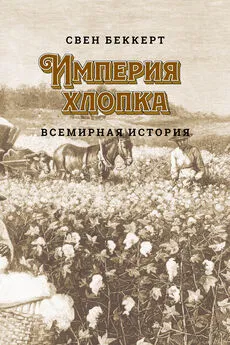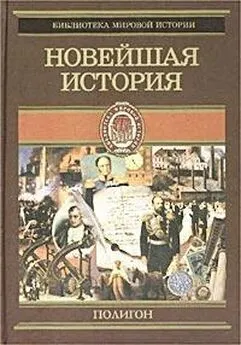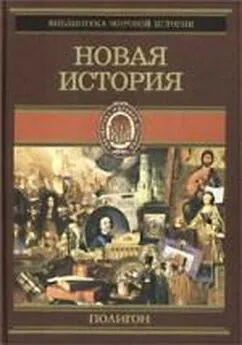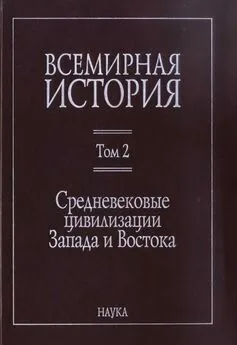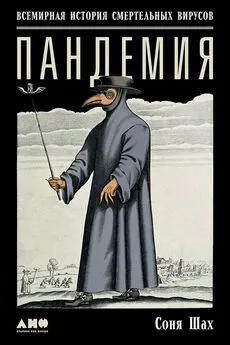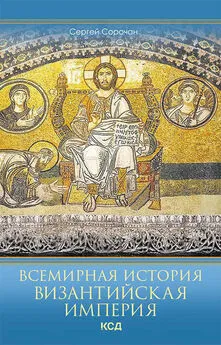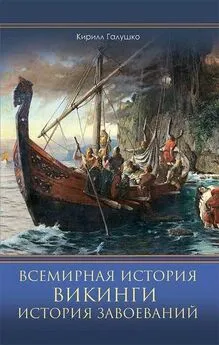Свен Беккерт - Империя хлопка. Всемирная история
- Название:Империя хлопка. Всемирная история
- Автор:
- Жанр:
- Издательство:неизвестно
- Год:неизвестен
- ISBN:978-5-93255-528-6
- Рейтинг:
- Избранное:Добавить в избранное
-
Отзывы:
-
Ваша оценка:
Свен Беккерт - Империя хлопка. Всемирная история краткое содержание
Империя хлопка. Всемирная история - читать онлайн бесплатно ознакомительный отрывок
Интервал:
Закладка:
34
Информацию о многообразии происхождения хлопка и его окультуривании см.: Meadow, “Origins,” 397.
35
Brown, Cotton , 8; Maureen Fennell Mazzaoui, The Italian Cotton Industry in the Later Middle Ages, 1100–1600 (Cambridge: Cambridge University Press, 1981), 11, 15, 17–18; Lucas, Ancient Egyptian Materials , 148; Hartmut Schmoekel, Ur, Assur und Babylon: Drei Jahrtausende im Zweistromland (Stuttgart: Gustav Klipper Verlag, 1958), 131; Baines, History of the Cotton Manufacture , 27; Richard W. Bulliet, Cotton, Climate, and Camels in Early Islamic Iran: A Moment in World History (New York: Columbia University Press, 2009), 1, 8, 46; Marco Polo, Travels , 22, 26, 36, 54, 58, 59, 60, 174, 247, 253, 255.
36
Chao Kuo-Chun, Agrarian Policy of the Chinese Communist Party, 1921–1959 (Westport, CT: Greenwood Press, 1977), 5, 8ff.
37
Craig Dietrich, “Cotton Culture and Manufacture in Early Ch’ing China,” in W. E. Willmott, ed., Economic Organization in Chinese Society (Stanford, CA: Stanford University Press, 1972), 111ff.; Mi Chu Wiens, “Cotton Textile Production and Rural Social Transformation in Early Modern China,” Journal of the Institute of Chinese Studies of the Chinese University of Hong Kong 7 (December 1974): 516, 517ff., 519; Frederick W. Mote and Denis Twitchett, eds., The Cambridge History of China , Vol. 7, The Ming Dynasty, 1368–1644 , part 1 (New York: Cambridge University Press, 1998), 256, 507; Kenneth Pomeranz, “Beyond the East-West Binary: Resituating Development Paths in the Eighteenth-Century World,” Journal of Asian Studies 61 (May 2002): 569; United States, Historical Statistics , 518.
38
Anthony Reid, Southeast Asia in the Age of Commerce, 1450–1680 , vol. 1, The Lands Below the Winds (New Haven, CT: Yale University Press, 1988), 90; Crawford, Heritage , 7; William B. Hauser, Economic Institutional Change in Tokugawa Japan: Osaka and the Kinai Cotton Trade (Cambridge: Cambridge University Press, 1974), 117–20; Mikio Sumiya and Koji Taira, eds., An Outline ofJapanese Economic History, 1603–1940: Major Works and Research Findings (Tokyo: University of Tokyo Press, 1979), 99–100.
39
Stark, Heller, and Ohnersorgen, “People with Cloth,” 10, 29; Howard F. Cline, “The Spirit of Enterprise in Yucatan,” in Lewis Hanke, ed., History of Latin American Civilization , vol. 2 (London: Methuen, 1969), 137; Johnson, “Technology,” 259; Thomas J. Bassett, The Peasant Cotton Revolution in West Africa: Cote d’Ivoire, 1880–1995 (New York: Cambridge University Press, 2001), 33; James Forbes, Oriental Memoirs: A Narrative of Seventeen Years Residence in India , vol. 2 (London: Richard Bentley, 1834), 34; Moritz Schanz, “Die Baumwolle in Russisch-Asien,” Beihefte zum Tropenpflanzer 15 (1914): 2; о Корее см.: Tozaburo Tsukida, Kankoku ni okeru mensaku chosa (Tokyo: No-shomu sho noji shikenjyo, 1905), 1–3, 76–83.
40
Oppel, Die Baumwolle , 201; Berdan, “Cotton in Aztec Mexico,” 241; Hall, “Spindle Whorls,” 120; Sundstrom, Trade of Guinea , 147; Curtin, Economic Change , 50, 212; Brown, Cotton , 8; Reid, Southeast Asia , 93; Gilroy, History ofSilk , 339; Carla M. Sinopoli, The Political Economy of Craft Production: Crafting Empire in South India, c. 1350–1650 (Cambridge: Cambridge University Press, 2003), 185; A. Campbell, “Notes on the State of the Arts of Cotton Spinning, Weaving, Printing and Dyeing in Nepal,” Journal of the Asiatic Society of Bengal (Calcutta) 5 (January to December 1836): 222.
41
Hall, “Spindle Whorls,” 115, 116, 120, 122, 124; Davison and Harries, “Cotton Weaving,” 182; Oppel, Die Baumwolle , 209; Prescott, Conquest of Peru , 51; Gilroy, History of Silk , 339, 343; Curtin, Economic Change , 213; Kent, Prehistoric Textiles , 35; Kent, Pueblo Indian , 28; Reid, Southeast Asia , 93; Sundstrom, Trade of Guinea , 148–49; Lamb and Holmes, Nigerian Weaving , 10–11; Johnson, “Technology,” 261.
42
Reid, Southeast Asia , 94.
43
Berdan, “Cotton in Aztec Mexico,” 242, 259; Mote and Twitchett, Ming Dynasty , 507, 690ff.; K. N. Chaudhuri, “The Organisation and Structure of Textile Production in India,” in Tirthankar Roy, ed., Cloth and Commerce: Textiles in Colonial India (Waltnut Creek, CA: AltaMira Press, 1996), 71; Wiens, “Cotton Textile,” 520; Sinopoli, Political Economy , 177.
44
Berdan, “Cotton in Aztec Mexico,” 242; Bray, “Textile Production,” 119; Sundstrom, Trade of Guinea , 162; Curtin, Economic Change , 212; Davison and Harries, “Cotton Weaving,” 187; Johnson, “Cloth as Money,” 193–202; Reid, Southeast Asia , 90; Sundstrom, Trade of Guinea , 164; Stark, Heller, and Ohnersorgen, “People with Cloth,” 9.
45
Smith and Hirth, “Development of Prehispanic Cotton-Spinning,” 356; Bulliet, Cotton, Climate, and Camels , 46, 59; Philiponeau, Coton et l’Islam , 25; Pedro Machado, “Awash in a Sea of Cloth: Gujarat, Africa and the Western Indian Ocean Trade, 1300–1800,” in Giorgio Riello and Prasannan Parthasarathi, eds., The Spinning World: A Global History of Cotton Textiles, 1200–1850 (New York: Oxford University Press 2009), 161–79; важность удаленности торговцев от государств, из которых они происходят, также подчеркивается Gil J. Stein, Rethinking World-Systems: Diasporas, Colonies, and Interaction in Uruk Mesopotamia (Tucson: University of Arizona Press, 1999), 173.
46
См.: Hall, “Spindle Whorls,” 115; Stark, Heller, and Ohnersorgen, “People with Cloth,” 9; Berdan, “Cotton in Aztec Mexico,” 247ff., 258; Kent, Prehistoric Textiles , 28; Volney H.Jones, “A Summary of Data on Aboriginal Cotton of the Southwest,” University of New Mexico Bulletin, Symposium on Prehistoric Agriculture , vol. 296 (October 15, 1936), 60; Reid, Southeast Asi a, 91; Sundstrom, Trade of Guinea , 147; Bassett, Peasant Cotton , 34; Curtin, Economic Change , 212–13; Halil Inalcik, “The Ottoman State: Economy and Society, 1300–1600,” in Inalcik and Donald Quataert, eds., An Economic and Social History of the Ottoman Empire, 1300–1914 (Cambridge: Cambridge University Press, 1994), 296; Hauser, Economic Institutional Change , 59.
47
Sundstrom, Trade of Guinea , 156, 157; Ramaswamy, Textiles , 25, 70–72; Chaudhuri, “Organisation,” 55; Inalcik, “Ottoman State,” 352; Mann, Cotton Trade , 2–3, 23; Smith and Cothren, Cotton , 68–69; Baines, History of the Cotton Manufacture , 24, 76; Wescher, “Die Baumwolle,” 1639; Gilroy, History ofSilk , 321; John Peter Wild and Felicity Wild, “Rome and India: Early Indian Cotton Textiles from Berenike, Red Sea Coast of Egypt,” in Ruth Barnes, ed., Textiles in Indian Ocean Societies (New York: Routledge, 2005), 11–16; Surendra Gopal, Commerce and Crafts in Gujarat, 16th and 17th Centuries: A Study in the Impact of European Expansion on Precapitalist Economy (New Delhi: People’s Publishing House, 1975), 3; цит. по: Inalcik, “Ottoman State,” 355, см. также: 350, 354, 355; см.: Eliyahu Ashtor, “The Venetian Cotton Trade in Syria in the Later Middle Ages,” Studi Medievali , ser. 3, vol. 17 (1976): 690; Suraiya Faroqhi, “Crisis and Change, 1590–1699,” in Halil Inalcik and Donald Quataert, eds., An Economic and Social History of the Ottoman Empire, 1300–1914 (Cambridge: Cambridge University Press, 1994), 524; Eugen Wirt, “Aleppo im 19. Jahrhundert,” in Hans Geord Majer, ed., Osmanische Studien zur Wirtschafts-und Sozialgeschichte (Wiesbaden: Otto Harrassowitz, 1986), 186–205; Sinopoli, Political Economy , 179.
48
Crawford, Heritage , 6, 69; Reid, Southeast Asia , 90, 95; quoted in Sinnappah Arasa-ratnam and Aniruddha Ray, Masulipatnam and Cambay: A History of Two Port-Towns, 1500–1800 (New Delhi: Munshiram Manoharlal Publishers, 1994), 121; некоторые информативные карты по поводу заморской торговли Гуджарата, а также его отечественной торговли в этот период см.: Gopal, Commerce and Crafts , 16, 80, 160; Mazzaoui, Italian Cotton , 9–11; Beverly Lemire, “Revising the Historical Narrative: India, Europe, and the Cotton Trade, c. 1300–1800,” in Riello and Parthasarathi, eds., The Spinning World , 226.
49
B. C. Allen, Eastern Bengal District Gazetteers: Dacca (Allahabad: Pioneer Press, 1912), 106; Sinopoli, Political Economy , 186; Baines, History of the Cotton Manufacture , 75; Ramaswamy, Textiles , 44, 53, 55; Wiens, “Cotton Textile,” 522, 528; Yueksel Duman, “Notables, Textiles and Copper in Ottoman Tokat, 1750–1840” (PhD dissertation, Binghamton University, 1998); Mazzaoui, Italian Cotton , 22; Max Freiherrn von Oppenheim, Der Tell Halaf: Eine neue Kultur im altesten Mesopotamien (Leipzig: Brockhaus, 1931), 70; Sundstrom, Trade of Guinea , 147; Lamb and Holmes, Nigerian Weaving , 10; Curtin, Economic Change , 48; Aka, Production , 69; Youssoupha Mbargane Guisse, “Ecrire l’histoire economique des artisans et createurs de l’Afrique de l’Ouest” (presentation, Universite de Dakar, Senegal, December 2011); Hauser, Economic Institutional Change , 20–30.
50
Chaudhuri, “Organisation,” 49, 51, 53; Hameeda Hossain, “The Alienation of Weavers: Impact of the Conflict Between the Revenue and Commercial Interests of the East India Company, 1750–1800,” in Roy, ed., Cloth and Commerce , 117. Suraiya Faroqhi, “Notes on the Production of Cotton and Cotton Cloth in Sixteenthand Seventeenth-Century Anatolia,” in Huri Islamoglu-Inan, ed., The Ottoman Empire and the World-Economy , (New York: Cambridge University Press, 1987), 267, 268; Inalcik, “Ottoman State,”; Huri Islamoglu-Inan, State and Peasant in the Ottoman Empire: Agrarian Power Relations and Regional Economic Development in Ottoman Anatolia During the Sixteenth Century (Leiden: E.J. Brill, 1994), 223, 235; Socrates D. Petmezas, “Patterns of Protoindustrialization in the Ottoman Empire: The Case of Eastern Thessaly, ca. 1750–1860,” Journal of European Economic History (1991): 589; Prasannan Parthasarathi, “Merchants and the Rise of Colonialism,” in Burton Stein and Sanjay Subrahmanyam, eds., Institutions and Economic Change in South Asia (Delhi: Oxford University Press, 1996), 96, 98; S. Arasaratnam, “Weavers, Merchants and Company: The Handloom Industry in Southeastern India, 1750–90,” in Roy, ed., Cloth and Commerce , 87; Bray, “Textile Production,” 127.
Читать дальшеИнтервал:
Закладка:
